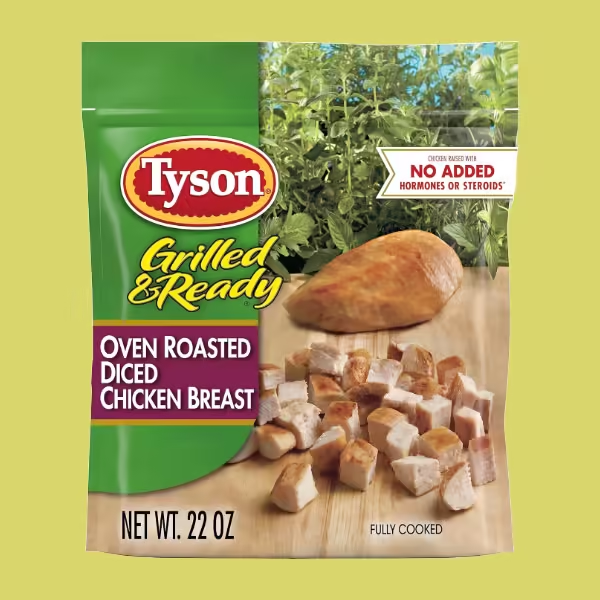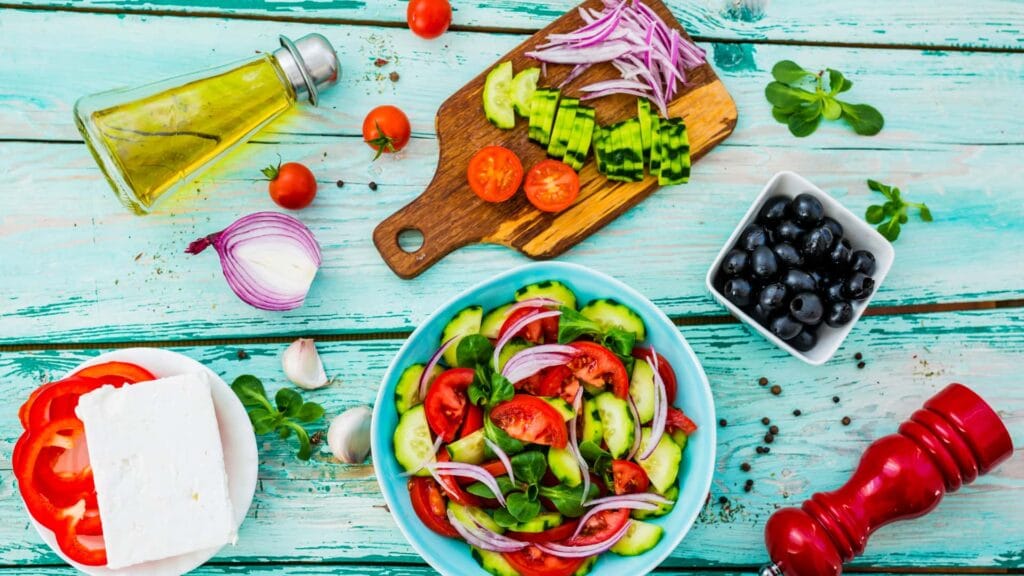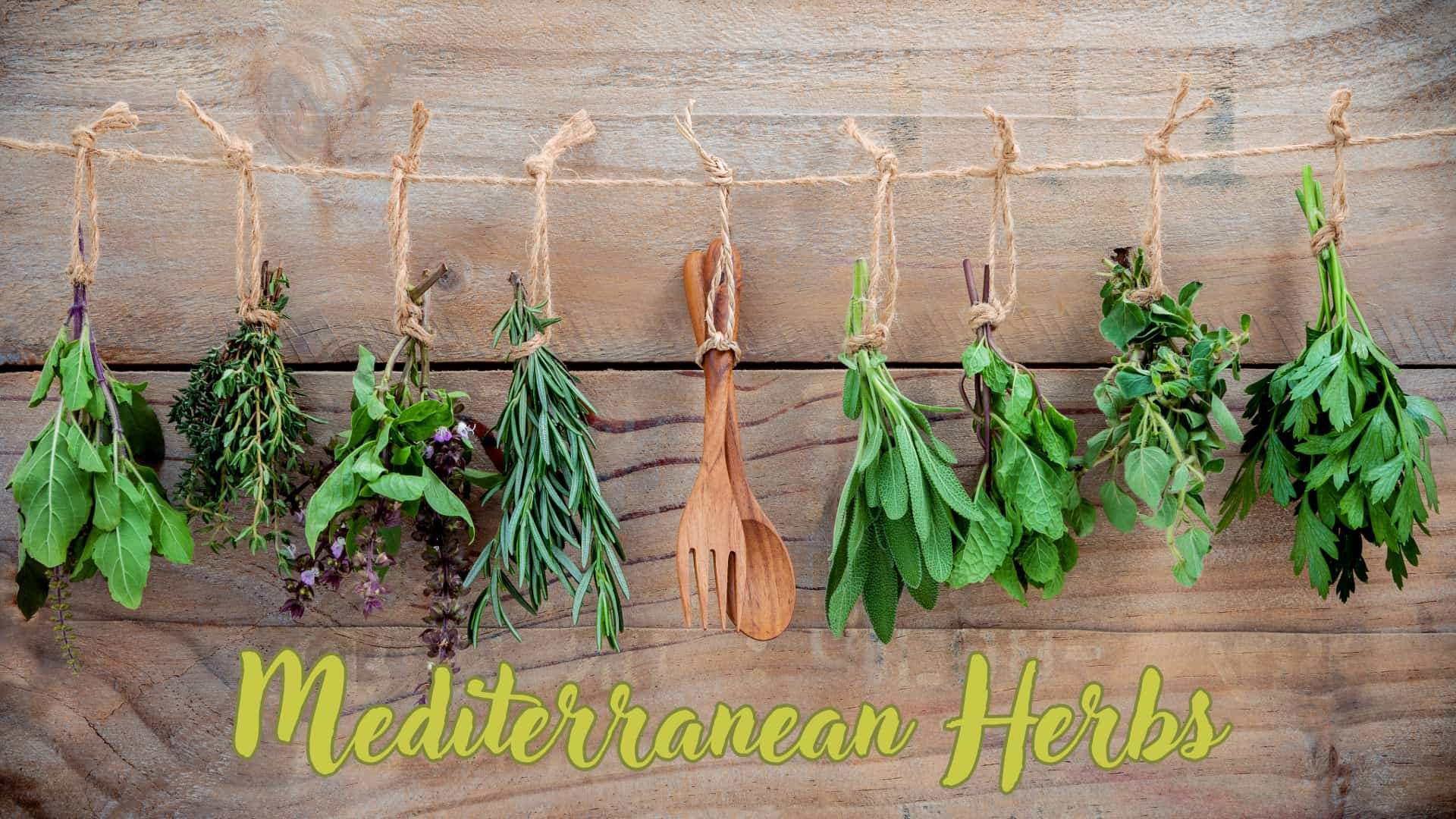Mediterranean cuisine is a vibrant tapestry of flavors, rooted in ancient civilizations like the Greeks and Romans. Better-known staples today are the Greek salad,
tzatziki sauce, and roasted lamb with rosemary.Green salads, often featuring crisp lettuce, tomatoes, and olives, highlight the region’s fresh produce and olive oil. Tzatziki, a creamy yogurt-based dip with cucumbers and
garlic, reflects the influence of Middle Eastern flavors. Roasted lamb with rosemary, a staple in Mediterranean feasts, showcases the use of aromatic herbs and the tradition of communal dining.This cuisine celebrates simplicity and seasonality, embodying a rich
cultural heritage that continues to thrive in modern culinary practices.
Greek Salad (Horiatiki)
The staple Greek salad also known as “Horiatiki,” is a refreshing and vibrant dish that celebrates the flavors of Greece. It’s a simple yet satisfying combination of fresh ingredients. Horiatiki is celebrated for its fresh and healthy simplicity. Often enjoyed during warm weather, it embodies the Mediterranean lifestyle. Its key ingredients include ripe tomatoes, crisp cucumbers, pungent red onion,
briny Kalamata olives, creamy feta cheese, extra virgin olive oil, and fragrant oregano.These components provide a delightful balance of textures and tastes. In the traditional salad, tomatoes and cucumbers offer
hydration and
vitamins, while olives contribute
healthy fats. Feta adds protein and calcium, and olive oil is rich in heart-healthy monounsaturated fats. Overall, Greek salad is not only delicious but also
a nutritious dish that supports a balanced diet.

Traditional Greek Salad Ingredients
The key ingredients are:
- Tomatoes: Ripe, juicy tomatoes are essential. They provide a sweet and tangy base. Tomatoes are rich in vitamins C, A, and antioxidants. According to the USDA Food and nutrient database one medium size tomato contains vitamin A, vitamin C, traces of vitamin D as well as iron, calcium, and potassium. (USDA, n.d.)
- Cucumbers: Crisp cucumbers add crunch and freshness. Cucumbers are low in calories and provide hydration. A cup of chopped cucumbers is about 18 calories per serving (about a cup). This serving contains protein and carbohydrates in the form of dietary fiber and complex carbs. Raw cucumbers do not contain saturated fat or cholesterol per serving, a cup has vitamins A, C, and D, iron, calcium, and potassium.
- Red onions: Thinly sliced red onions contribute to a mild bite. Red onions have protein and carbohydrates composed of sugar, dietary fiber, and complex carbs. Also vitamin C as well as iron, calcium, and potassium.

Buy from Amazon, Divina Kalamata Olives, Pitted, Organic, 10.2 Ounce jar,
bought repeatedly by over 10k customers.
- Kalamata olives: These dark, briny olives are a must. A serving of kalamata olives is about 3 olives and has 45 calories (15 g serving). This serving contains 4.5 g of fat, dietary fiber, iron, and potassium. Kalamata olives do not have any cholesterol, they contain 0.5 g of saturated fat.
- Feta cheese: Creamy and salty, feta cheese crumbles elevate the salad, being creamy and salty. It provides about 75 calories for about 6 olives (28.35 g serving). In addition to the fat, they also have protein and carbohydrates. Feta cheese contains saturated fat and 25 mg of cholesterol, so we have to go easy on this delicious cheese. It also has vitamins A, D, iron, calcium, and potassium.

California Olive Ranch, Global Blend Medium Extra Virgin Olive Oil
Among the top 100 best olive oils in the world is the California Olive Ranch extra virgin olive oil, the winner is the California Olive Ranch 100% California Extra Virgin Olive Oil, but this is a close variety, the global blend, in terms of flavor, it has over 10k satisfied customers according to Amazon, and it’s half the price of the winner at ~$35 a bottle. This is still a great choice, and you can buy from Amazon.
- Extra virgin olive oil: Drizzle generously for flavor, yes it’s olive, but this is really good oil to consume, so be generous. Olive oil adds healthy fats. One tablespoon has around 120 calories and all healthy fats. If you’re trying to cut down on oils, do it elsewhere, this is one you must indulge in, not only for flavor, but so many gut health benefits, as well as helping your heart, and overall health goals. Make sure you purchase oil that is bottled in dark bottles.

This Mediterranean Greek Oregano from Amazon has great reviews, and one thing that picked my interest is that most people said it’s fresher than store-bought spices (which I have to agree with), and I would not see it as an expensive option, compared to the price of old spices at grocery stores.
- Oregano: Sprinkle dried oregano for an aromatic touch, but it also has dietary fiber and traces of complex carbs, this spice contains vitamin A, iron, calcium, and potassium, all adding to your health goals in a meal and supporting essential functions such as blood clotting and bone metabolism (vitamin K and proteins).
 Premium wood and acrylic, refillable salt and pepper mills (grinder) set,
8 Inches-Pack of 2 from Amazon.
Premium wood and acrylic, refillable salt and pepper mills (grinder) set,
8 Inches-Pack of 2 from Amazon.- Salt and pepper: Season to taste. Salt is one controversial ingredient, consuming too much causes a lot of health problems, but most table salt not only flavors foods and according to Harvard T.H. Chan, School of Public Health, “The human body requires a small amount of sodium to conduct nerve impulses, contract and relax muscles, and maintain the proper balance of water and minerals.” (Chan, 2023)

Fullstar Vegetable Chopping Gadget, chops onions with ease, slices and spiralizes vegetables. Buy from Amazon, Home Essentials – Kitchen Accessories (8 in 1, White).
For those of us who prefer a gadget to chop up the veggies, I found this with great reviews in Amazon, my daughter purchased one because she wants the ease of chopping onions and cucumbers, I personally prefer to do it with an old fashion cutting board and sharp knife, but in case you’re interested, this seems to chop all your vegetables and slice as well, so it might be handy.
Other ingredients. The best part of the Greek salads is that you can add other ingredients such as green peppers, oregano, grilled chicken, and red wine vinegar, vegetables contribute minimal calories and if your chicken is lean the protein you’ll consume is enough reason for increased calories because you’ll have a satisfying salad.Ready to eat grilled chicken is a very popular alternative for a lot of people who have little time to cook, and working out heavily, and their goal includes managing weight.

This Tyson Grilled and Ready Oven Roasted Diced Chicken Breast is a very clean protein that’s juicy, and convenient for quick meals, available from Amazon.
Overall a low-calorie option, a typical serving of Greek salad (about 1 cup) contains approximately 179 calories, 15 grams of fat, 5.1 grams of protein, and 7.4 grams of carbs.In addition, when you add proteins to your salads such as grilled chicken, shrimp, tuna fish, or even steak, you get a full meal with lots of protein, fiber, and loads of
vitamins and
minerals, essential to your health and body functions.Olive oil has an incredibly good impact on your health for losing weight, and for your digestive system. Just make sure you are getting the extra virgin variety and the date of production is not too many years behind, the expiration date on many olive oils don’t really tell you much, but the production or
harvest date is valuable in obtaining the best oil for your health and enjoyment.

Preparation for a Traditional Greek Salad
There is no right or wrong way to put this simple, delicious, and healthy salad together, as long as you leave the dressing for last, before tossing together to make sure all your ingredients are coated. Basically, you do the following:
- Chop the veggies such as tomatoes, cucumbers, and onions.
- Combine them in a bowl with olives and crumbled feta cheese.
- Drizzle olive oil or your favorite dressing with olive oil, sprinkle oregano, and season with salt and pepper.
- Toss gently to mix.
Serving your Greek Salad
This salad can be eaten alone, especially when proteins are added, but it’s an excellent side to other meals such as the Roast Lamb, or Pizza.You’ll want to serve the Greek salad chilled, which means that you’ll have your chopped ingredients in the refrigerator if preparing in advance, or you’ll chop immediately right out of the refrigerator and start assembling the salad. If you’re doing some meal prep work, you would have all these ingredients in small containers in the refrigerator ready to go.You’ll find that this salad goes really well with a slice of crusty bread or pita on the side. Also, your dressing of choice may be a Tzatziki freshly made sauce. I’ll talk about this in my
Getting Creative with Tzatziki article in detail because this is one of the most loved, traditional sauces in the region of Greece and the surrounding area. I like the salad with this sauce as a dressing because it adds depth to the flavors such as fresh
garlic and herbs, and there are some awesome non-allergenic choices, for those who have allergies to dairy.

Variations to the Traditional Greek Salad
There are several alternatives and variations to the traditional Greek salad, each adding unique twists while maintaining the essence of the dish.Listed below are the most popular variations I know, but unspoken variations include those that are made with ingredients that are non-allergenic for people who have specific food allergies.Also, some variations include meat for people who want a fuller lunch or dinner plate with everything they like. Some variations mainly remain in the vegetable category but use different or added ingredients such as artichokes.
- Mediterranean Salad: Incorporates similar ingredients but may add bell peppers, artichokes, or roasted vegetables for additional flavor and texture.
- Quinoa Greek Salad: Includes quinoa as a base, boosting protein and fiber while retaining the classic toppings like feta and olives.
- Pasta Greek Salad: Combines cooked pasta with traditional Greek salad ingredients for a heartier version, perfect as a side dish or main.
- Caprese Greek Salad: Blends Greek salad elements with fresh mozzarella and basil, offering a fusion of Italian and Greek flavors.
- Tuna Greek Salad: Adds canned tuna for extra protein, making it a more filling option, often served with a drizzle of lemon juice.
- Fruit Greek Salad: Includes seasonal fruits like watermelon or oranges for a refreshing, sweet twist, ideal for summer.
These variations are all subjective to our needs and likes, some of us want to include more greens, and lettuce, kale, or spinach is then added. Each variation highlights the adaptability of Greek salad while keeping its core ingredients and health benefits.

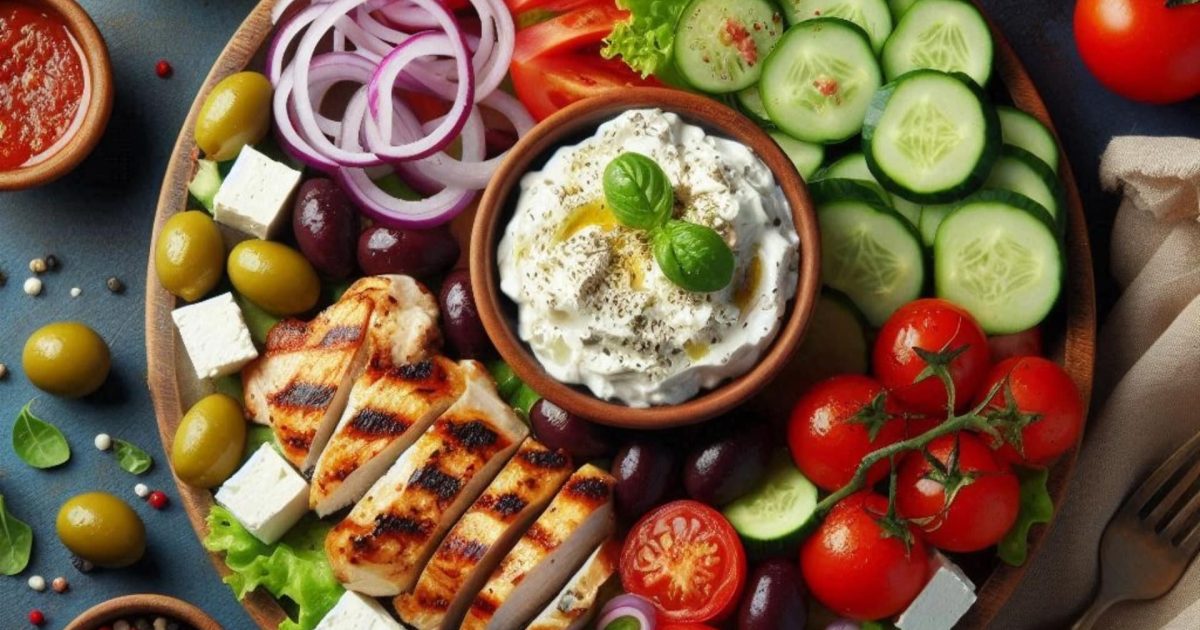
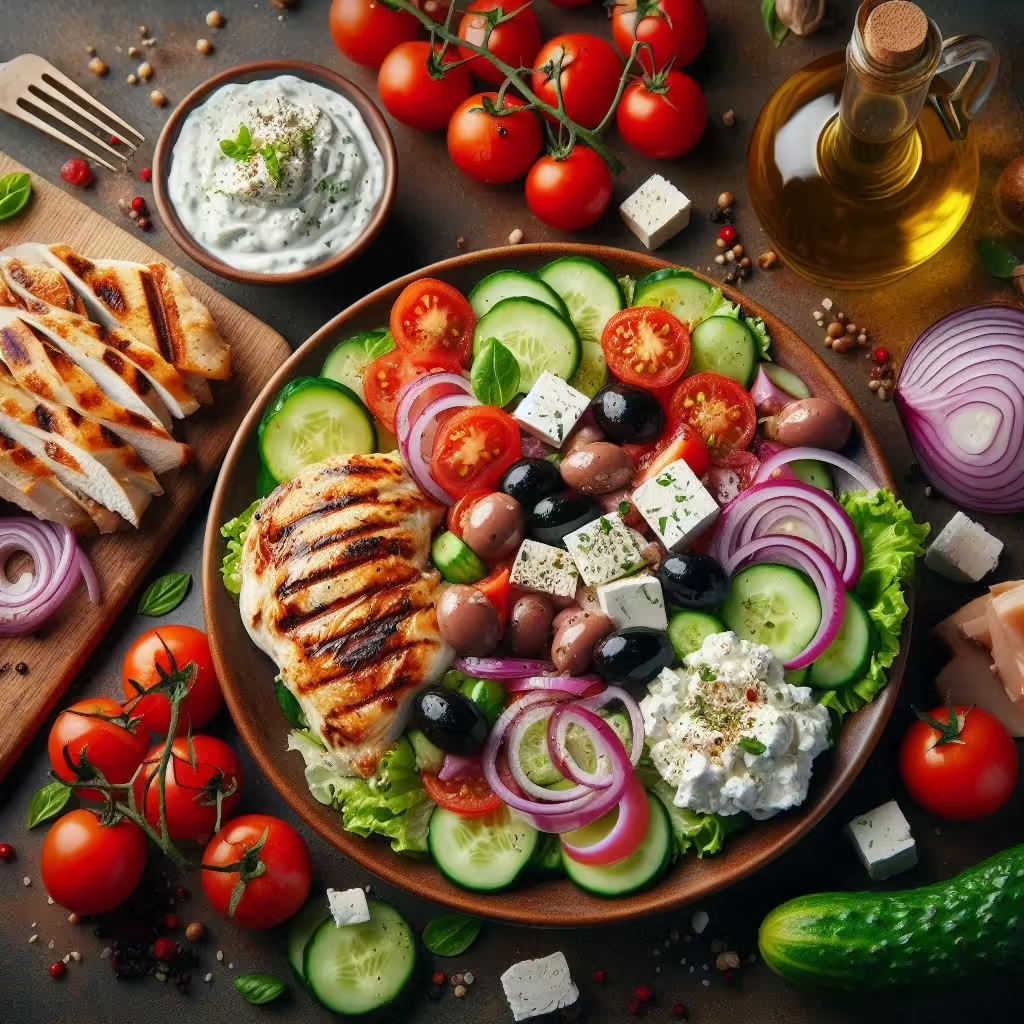
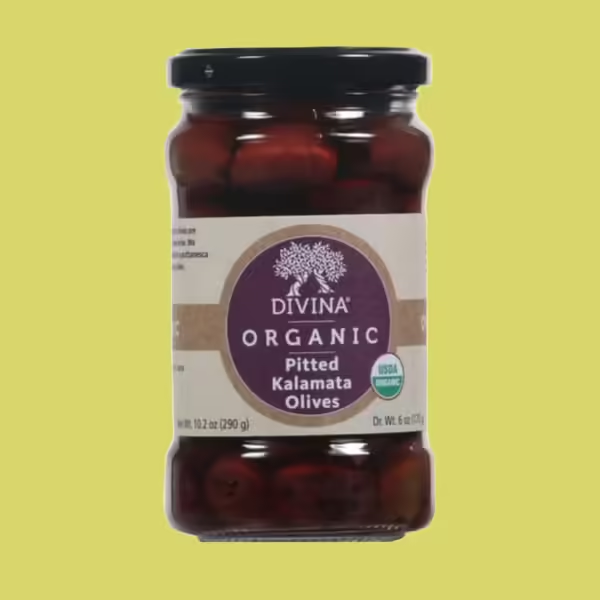
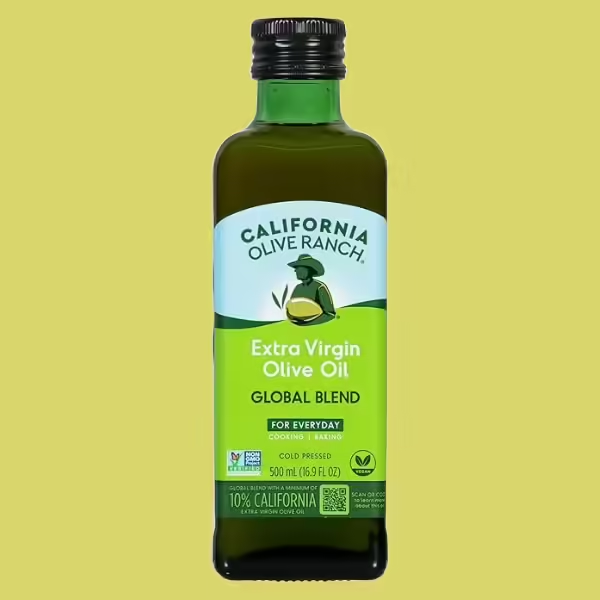
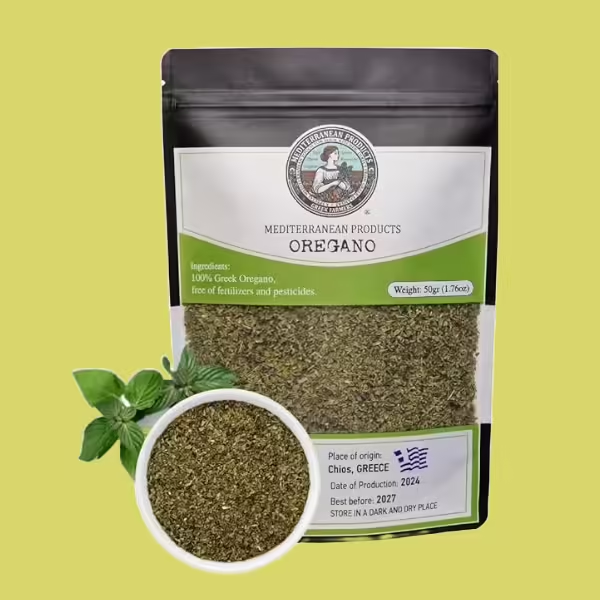
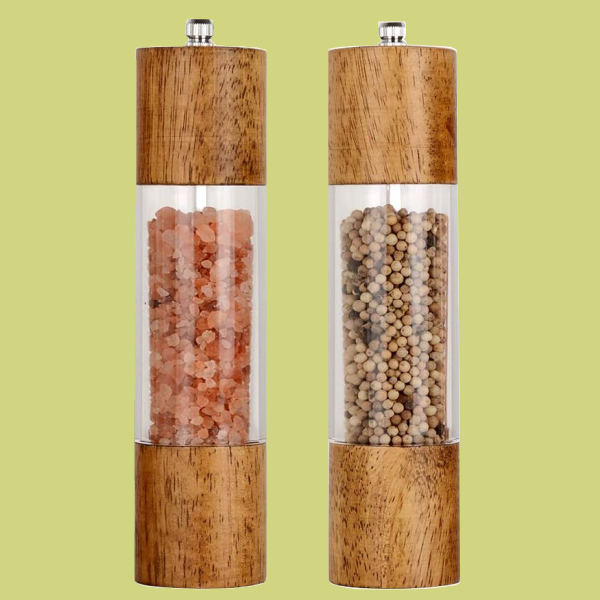 Premium wood and acrylic, refillable salt and pepper mills (grinder) set,
8 Inches-Pack of 2 from Amazon.
Premium wood and acrylic, refillable salt and pepper mills (grinder) set,
8 Inches-Pack of 2 from Amazon.
